QuestionHi hopefully you can give me some advice. In the past 2 days I noticed 2 of my Black Moores and one of my golden fantails are not very active. They are laying on the bottom of the tank. Although they do move around when I feed them.
I currently have 3 moores, 2 small algae eaters,5 fan tails, and 1 black bottom feeder. I have a 10 gallon tank that is powered by a whisper filter system.
I currently changed the water in my tank. Before I changed the water I let it sit for 2-3 days so the chlorine and other remnants in the water would clear up. I also add a small amount of Melafin to the water as a back up. The filter was changed about 2 weeks ago.
I read that they might have TB does this sound right? I would appreciate the advice.
Thank you for your time
AnswerHi John;
This sounds like a water chemistry problem of some kind.
If the tank has been set up for less than 8 weeks, it is New Tank Syndrome. You have an overcrowded tank too, so they need some water changes to get them through it. I will include a copy of my article on new tanks in case that is the problem.
Use a regular water conditioner to remove chlorine and chloramine. Chloramine, unlike chlorine, does not evaporate. Leaving the water out will not get rid of it. It has to be detoxified with Stress Coat, Nov Aqua or some other water conditioner. Not all water systems add chloramine but it is better to be safe than sorry. A couple of other added benefits to water conditioners is helping the fish with stress by adding helpful extra slime coating and detoxifying any metals that can be present in tap water.
Changing the filter could have the same effect as having a new tank, causing toxins to rise. The filter has beneficial bacteria in it that consumes the toxins that come from fish waste. When it is changed, sometimes toxins rise due to the lack of enough beneficial filtering bacteria. Make 25% water changes every day until the fish feel better. Also, get a sample of water to the local fish store and ask them to test the pH, ammonia, nitrIte and nitrAte. If the pH is between 6.5 and 7.4 it is fine. If ammonia or nitrite are present at all, keep making water changes until they go down and stay down. Ammonia and nitrite should always be "zero". The beneficial bacteria needs to mature in order to eliminate it. This is why the daily water changes are essential. Water changes dilutes the toxin levels until the bacteria can take over. Nitrate should always remain below 40 ppm. Make more frequent water changes to lower it. Every week is good with as many fish as you have in this little tank.
Look at the fish to be sure they don't have spots or fungus patches. This could be the problem if my other suggestions don't seem to be reasonable in your situation. Let me know.
Here is my article on new tanks to help you understand it if this is what your fish are going through;
**********
New Tank Syndrome or Break-in Period
So you have a new tank and you filled it up, put the filter together, mounted the heater into place and turned on the lights. You have all the plants and decorations where you want them....
You are ready for fish.
But, your filter is not ready for a full tank of fish yet.
The filter is running and moving the water and cleaning out crud, right? Of course!
But a very important part of your filter is the part you can't see. An aquarium filter removes the larger visible stuff, but it also must remove the dissolved fish waste that turns into ammonia in the water. To do this, special bacteria must grow in the filter system and on the particles of gravel in the bottom of your tank. This process occurs even on a limited scale in little fish bowls that have no filter in them.
This is "New-Tank Syndrome" or the "Break-in Period". The entire process takes 6 to 8 weeks to complete because these "nitrifying" bacteria grow quite slowly.
Start off with only two hardy fish for every ten gallons of water and don't add more until the 6 to 8 weeks has gone by. Hard to be patient, but it is worth it to keep your fish alive and healthy. As a matter of fact, the bacteria cannot develop without fish in the tank. You can let that tank sit forever without fish in it, but as soon as the first fish goes in the process begins. Avoid changing the filter pads during break-in. This removes the bacterial colonies that are essential to a balanced aquarium. You can rinse the filter pad out in a container of aquarium water. This will preserve most of the bacteria colonies while still allowing your filter to flow freely. Even using bacteria additives and water conditioners when you first set up the tank will not make a tank cycle by itself. If there are no fish to provide food (fish waste) for the bacteria, the beneficial bacteria cultures will die and you will have to start the colonies all over again once fish are added to the tank.
Feed your new fish VERY lightly. Any excess food will cause additional waste your system cannot afford to have right now. If you see food floating around or lying on the plants and gravel after five minutes, too much food is going into the tank. Cut back a little each time you feed until it is ALL gone 5 minutes after you feed them.
During this "break-in period" your tank will become cloudy and milky looking. You may have to tolerate this for the entire break-in period but it is only temporary. Changing 25% of the water three times a week until the break-in period is over helps a great deal. Changing water reduces the ammonia and nitrites that rise while the bacteria continues to multiply. If ammonia and/or nitrites become too high, your fish will become stressed and possibly die. Use a good water conditioner when you replace the water and make sure it is the right temperature to avoid shocking your fish.
When the break-in period is over, do regular water changes and vacuum the gravel at the same time. A change of 25% every one to two weeks is a good rule of thumb. It simply needs to be done for healthy fish.
Following these guidelines will help you get your new tank on the right track.
**********
Followups welcome.
At Your Service;
Chris Robbins

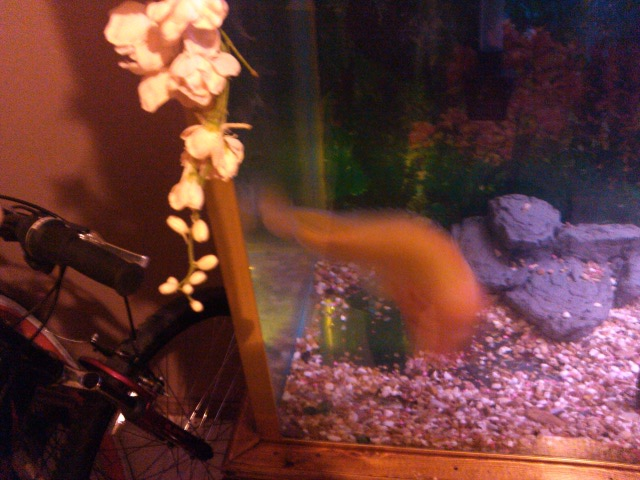 Is My Red Devil Cichlid Sick?
Question
This Is His Weird Swim This Is How He La
Is My Red Devil Cichlid Sick?
Question
This Is His Weird Swim This Is How He La
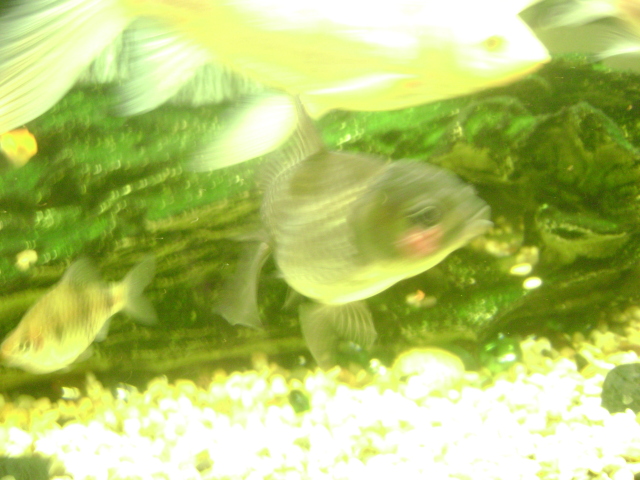 open wound below eye,no white fungus
Questionblue orando
QUESTION: heya,i have an ora
open wound below eye,no white fungus
Questionblue orando
QUESTION: heya,i have an ora
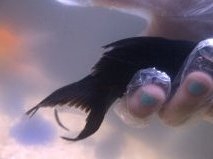 Black Moor with a Tail
Question
Black Moor Black Moor
Hi Jaymie,
Black Moor with a Tail
Question
Black Moor Black Moor
Hi Jaymie,
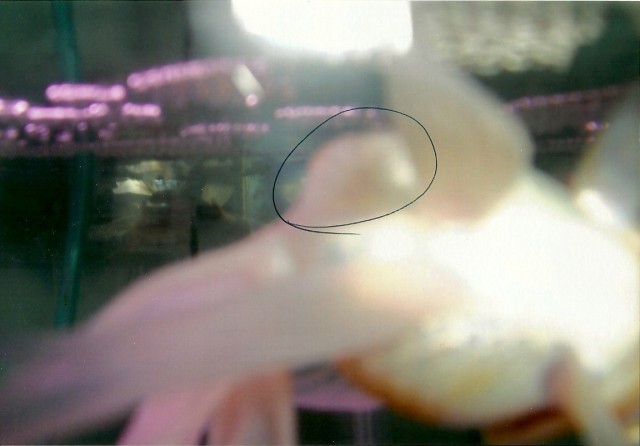 ryukin
QuestionQUESTION: I have a ryukin goldfish that has bee
ryukin
QuestionQUESTION: I have a ryukin goldfish that has bee
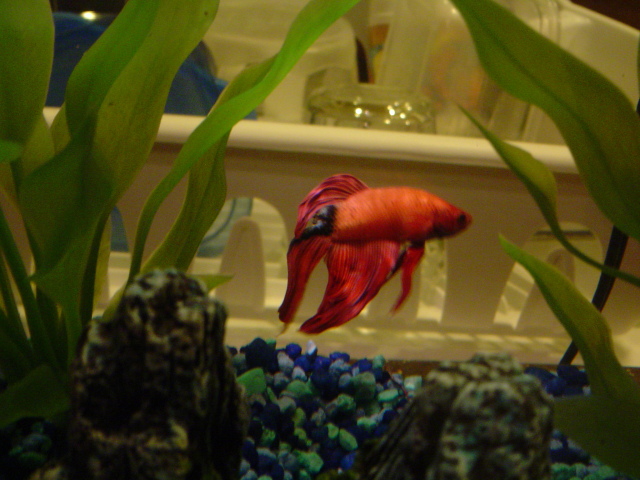 betta tail problem
Question
Decaying Fin
Hi Lynda! I need some serious hel
betta tail problem
Question
Decaying Fin
Hi Lynda! I need some serious hel